Amazing Rustic Cornbread! Don’t make that boring stuff
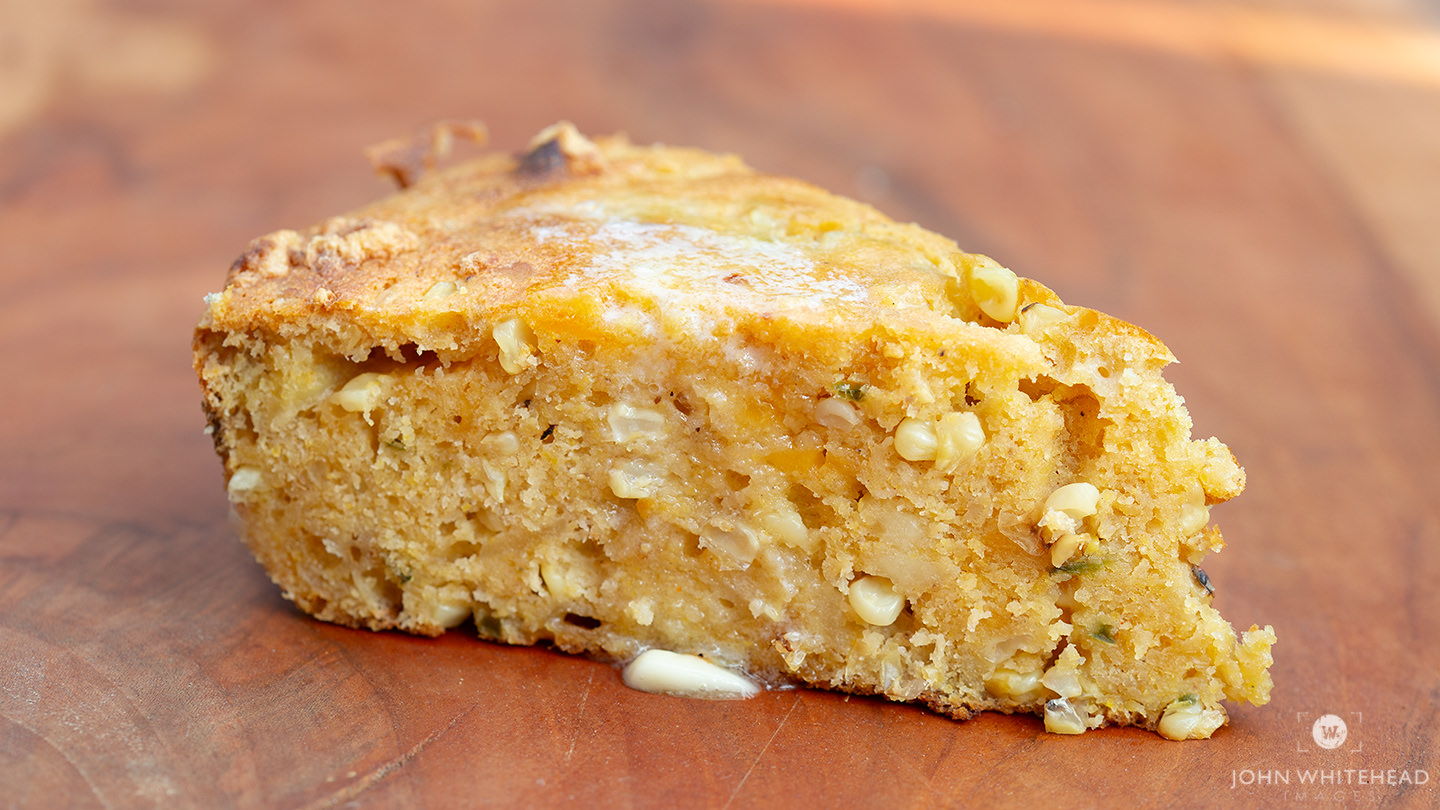
Rustic Cornbread! If you’ve been settling for plain, boring cornbread, it’s time to elevate your taste buds with this incredible rustic cornbread recipe. Not only is it easy to make, but it’s also so much better than the ordinary version. I’ve been perfecting this recipe over the last 30 years, and trust me, it’s worth every minute in the kitchen. The only change I’ve made over time is the addition of pine nuts, although they’ve become quite pricey lately, so I understand if you want to skip them.
The version I’m sharing includes sautéed jalapeños and cheese, but feel free to omit them if they’re not your thing. However, the real secret to this rustic cornbread’s delectable texture lies in the incorporation of whipped egg whites, so whatever you do, don’t skip this step. This is what cornbread should look like – not that thin, lifeless stuff you find at the grocery store.
So, are you ready to take your cornbread game to the next level? Let’s get baking this rustic cornbread!
If you like chili with your cornbread I have two amazing recipes. Whisky Chili and Smoked Chili!
The History of Cornbread: From Ancient Grains to American Staple
Rustic Cornbread, a humble and beloved comfort food, has a rich and diverse history that spans thousands of years. Its origins can be traced back to the ancient civilizations of the Americas. Let’s take a journey through time to explore the fascinating history of cornbread.
1. Ancient Beginnings:
Corn, or maize, was first domesticated by indigenous peoples in Mesoamerica around 9000 BCE. These early cultivators ground corn into cornmeal and mixed it with water to create a simple form of cornbread. They baked it on hot stones or in clay pots over open fires, producing a flatbread-like staple that sustained their communities.
2. Native American Influence:
When European explorers arrived in the Americas, they encountered the Native Americans’ corn-based diet and learned about cornbread. Native Americans generously shared their knowledge of growing and processing corn, as well as their culinary techniques, including various methods of preparing cornbread.
3. Colonial Era:
As European settlers established colonies in North America, corn became a crucial crop for survival. Cornbread became a staple in the settlers’ diet due to the abundance of corn and its versatility. Early cornbread recipes were simple, containing only cornmeal, water, and salt. It was often cooked on griddles or in cast iron pans over an open flame.
4. Regional Variations:
As America expanded westward, cornbread evolved differently in various regions, adapting to local ingredients and tastes. In the southern United States, for example, buttermilk and baking soda were introduced, leading to a lighter and fluffier version of cornbread. Meanwhile, in the Appalachian Mountains, “Johnny cakes” emerged, consisting of thinner cornbread cooked on hot stones.
5. Civil War Hardships:
During the Civil War, cornbread played a crucial role as a staple food for soldiers and civilians alike. Its affordability and ease of preparation made it a valuable source of sustenance during times of scarcity. Cornbread recipes during this period often had little to no wheat flour, resulting in a coarser texture.
6. Influence on Southern Cuisine:
Cornbread became deeply ingrained in Southern cuisine and culture. It became a popular accompaniment to dishes like collard greens, fried chicken, and barbecue. Different Southern states developed their own unique variations, such as the sweeter cornbread found in parts of Texas.
7. 20th Century and Beyond:
With advancements in agriculture and food processing, cornbread’s popularity spread beyond the American South. It became a symbol of American comfort food and found its way into homes, restaurants, and cookbooks across the country.
8. Cultural Significance:
Cornbread’s enduring popularity is not just about its delicious taste; it carries cultural significance as well. For many, cornbread represents a connection to their heritage and family traditions, evoking memories of shared meals and gatherings.
9. Modern Innovations:
As culinary tastes have evolved, chefs and home cooks have experimented with cornbread recipes, adding creative twists and incorporating diverse ingredients. Variations like jalapeño cornbread, cheesy cornbread, and sweet cornbread with honey or maple syrup have become popular.
Conclusion:
Cornbread’s history is a tale of resilience, adaptability, and cultural significance. From its ancient roots among Native American civilizations to its cherished place as a symbol of Southern cuisine and American comfort food, cornbread continues to be celebrated and enjoyed by people of all backgrounds. Its simple ingredients and heartwarming taste make it a timeless classic that will undoubtedly be savored for generations to come.

Rustic Cornbread in Cast iron Pan
Steps to make Rustic Cornbread
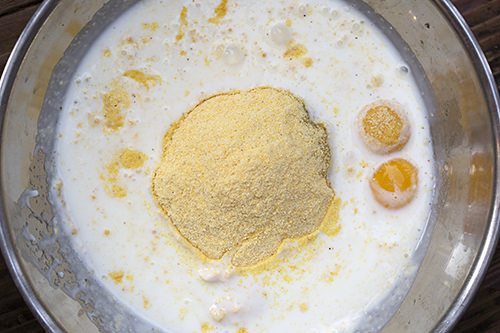



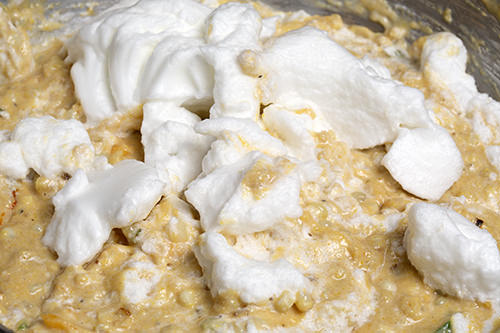
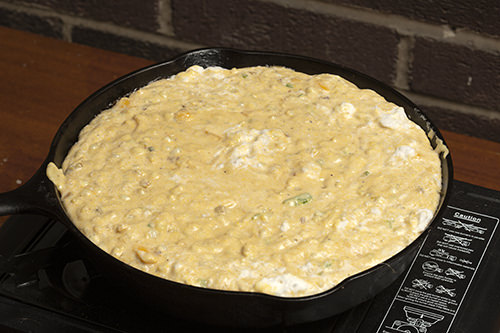
Ingredient of the Day- Yellow CornMeal
Yellow cornmeal is a type of cornmeal that is made from dried and ground yellow corn kernels. Cornmeal itself is a coarse flour that is derived from maize, or corn, and it comes in various textures, including fine, medium, and coarse grind. Yellow cornmeal gets its name from the natural yellow color of the corn kernels used in its production.
The process of making yellow cornmeal involves drying and grinding the whole corn kernels, including the germ, bran, and endosperm. This results in a coarser texture compared to corn flour, which is made from just the endosperm and is much finer.
Yellow cornmeal is commonly used in cooking and baking, particularly in American and Southern cuisine. It serves as a versatile ingredient in recipes for cornbread, corn muffins, hushpuppies, corn cakes, and even as a breading for fried foods like fried chicken or fish.
The natural yellow hue of yellow cornmeal adds a pleasant color and distinct flavor to dishes, making it a popular choice for various culinary creations. It’s an essential ingredient in many traditional dishes and is enjoyed by food enthusiasts worldwide for its unique taste and texture.
Joke of the Day!
“Why did the carrot break up with the potato? It could not handle the couch-potato lifestyle!”

JOIN US!
SUBMIT YOUR OWN RECIPE
We Would love to hear from you
We would love to hear from you. What is your favorite holiday recipe? Let us know in the comments below. If you have a recipe you think is amazing, feel free to submit it with link below.

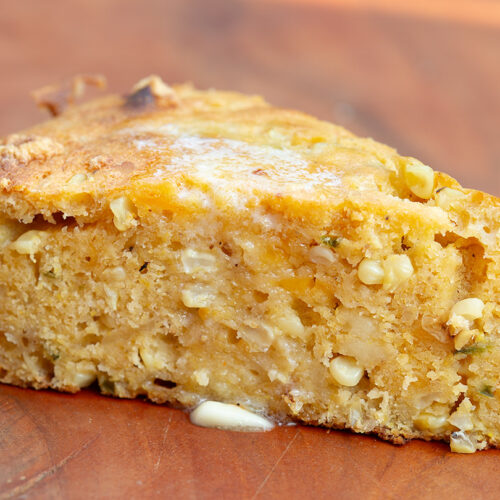
Let me know how you like this recipe!
Pingback: Bake the Perfect Soft or Crusty Homemade Bread - Foods With Flavor
Pingback: Robust Smoked Chili without smoking-no beans and beans recipes - Foods With Flavor
Pingback: 1 Easy, Warm and comforting Whisky chili with beans – perfect for a winter night! - Foods With Flavor
Pingback: Smooth Chicken, Pork, and Roasted Pepper Chili That everyone will Love! - Foods With Flavor